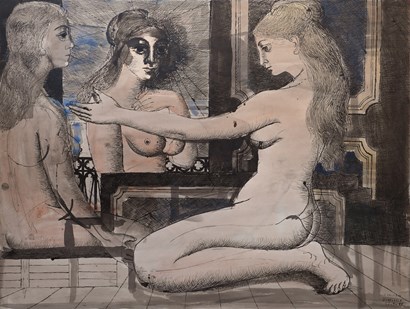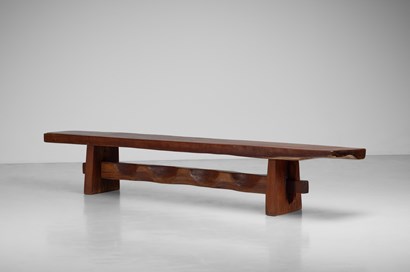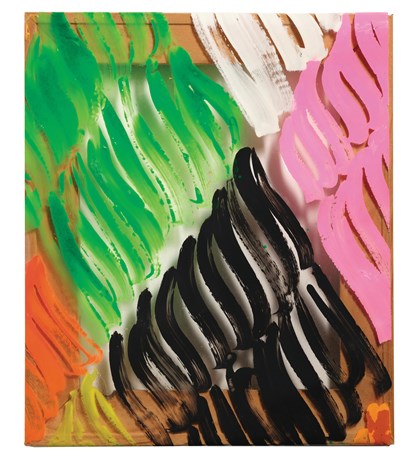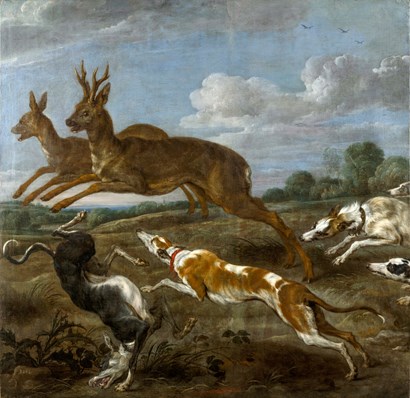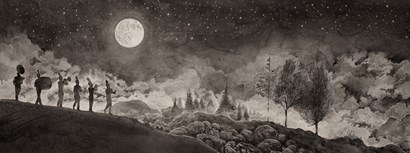This section will be available this Autumn.
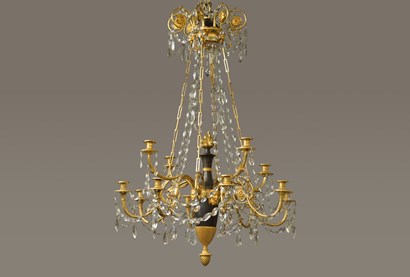
Hoffmans Antiques
Chandelier in the 'Retour d’Égypte' style Paris, early 19th century Attributed to Benjamin Ladouèpe-Dufougerias and the 'Manufacture de Cristaux de Montcenis' Ormoulu, patinated and fire-gilt bronze for twelve candles H 130 cm - Ø circa 80 cm Provenance: private European collection This magnificent chandelier exemplifies the short-lived yet influential 'Retour d’Égypte' style, which emerged in the wake of Napoleon’s Egyptian campaign (1798–1801). At its centre stands an amphora-shaped patinated urn, crowned with a flaming finial and surmounted by a pinecone. From the urn’s body spring twelve elegantly curved candle arms arranged in two tiers, richly ornamented with foliage motifs and set between four stylised Egyptian masks. The chandelier is suspended by four chains leading to an imposing corona adorned with leonine masks and voluted floral decoration. The style was largely shaped by the architects Charles Percier and Pierre François Léonard Fontaine, whose neoclassical designs laid the foundation for this decorative vocabulary. It endured only briefly before giving way to the Empire style with the establishment of Napoleon and the First French Empire. Provenance and Comparanda: A closely related chandelier for twelve lights, attributed to the Manufacture de Cristaux de la Reine, is preserved in the collections at Versailles, formerly installed in Marie-Antoinette’s inner cabinet at the Petit Trianon.

Gilden's Art Gallery
Gino Severini (Italy, Cortona 1883-1966 Paris, France) The dancer, 1959 Tempera painting on wove paper 39.5 x 28.5 cm Signed lower right 'G. Severini' and dedicated in pencil ‘al caro vecchio amico Raffaele Carrieri, affectuoso riccordi di Gino Severini’ [to a dear old friend Raffaelle Carrieri, with affectionate memories, Gino Severini] in the lower right corner The work comes with a photo-certificate of authenticity by Romana Severini Brunori dated 13 May 2025 Provenance: the celebrated poet Raffaele Carrieri (1905-1984); private collection, Milan
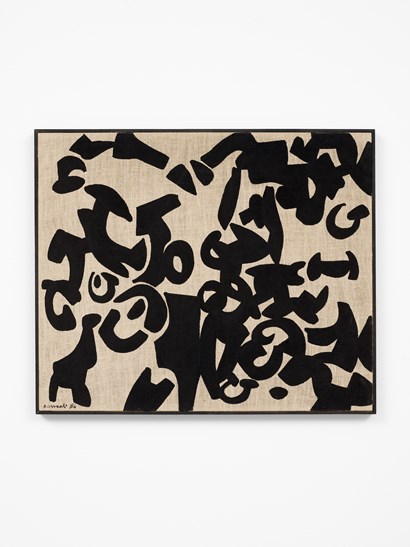
Galerie Greta Meert
carla accardi
Carla Accardi (Trapani 1924-2014 Rome) Frammenti, 1984 Acrylic on canvas 50 x 60 cm Frammenti, a work from 1984, ‘Fragments’; the work affirms Carla Accardi’s place as a voice of innovation in an Italian art scene dominated by male voices. In this 50 x 60 cm painting using only black paint on the untreated material of the canvas, the artist constructs a rhythmic interplay of signs animating recognition and illegibility, an evocation of a writing that dissolves into abstraction. The work embodies the tension that characterises her oeuvre: a subtle intertwining of classical painterly discipline and the radical openness of the avant-garde, resulting in a visual language that is as rigorous and experimental as it is personal.

Galerie de la Présidence
geer van velde
Geer van Velde (The Netherlands, Lisse 1898-1977 Cachan, France) Composition - atelier, circa 1951 Oil on canvas 134 x 148 cm Signed lower right with initials This work will be included in the forthcoming catalogue raisonné of Geer van Velde - Painted Work, currently in preparation by Pierre François Moget, son of Piet Moget Provenance: Galerie Hautefeuille, Paris; private collection, Brussels

Galerie Capazza
Goudji (Georgia, Bordjomi 1941) Oryx à la robe diaprée, 2025 Silver 1st title, serpentine, pyrite, crystal, Armour stone H 49 x W 38 x D 10 cm Provenance: the artist's studio Exhibition: Goudji, L'or du temps, 5 July-28 September 2025, Galerie Capazza (France) This oryx, with its serpentine goatee and crystal-adorned tail, is an African antelope. It sports horns and a coat draped in Armour stone, and wears a silver bell around its pyrite neck, ready to ring. 'When viewing Goudji's works, one is overcome by a disturbing feeling, that of being faced with original, powerful, dazzling masterpieces that delicately resonate with so many symbols that shape our visual culture and our common heritage, from Persia to Athens, from Babylon to Rome, from the Tigris to the Danube, winged griffins of malachite and lapis lazuli, birds with bold and daring beaks, reassuring ex-votos, kantharoi and cups worthy of banquets of the gods. Modest, always secretive, born into goldsmithing because he ardently wanted to be, constantly devoted to his craft, constantly exploring forms, constantly telling stories, Goudji has definitely entered into history.' by Olivier Gabet, 2025 (General Curator of Heritage and Art Historian - Director of the Department of Decorative Arts at the Louvre Museum)
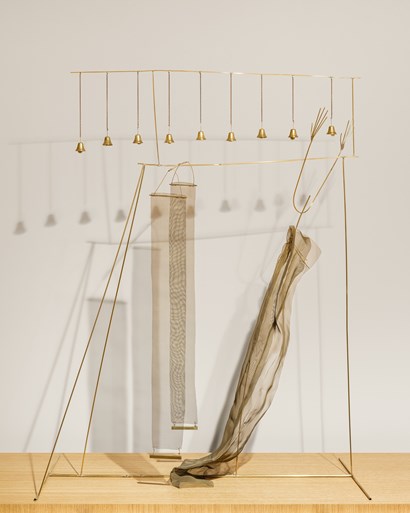
Pron
fausto melotti
Fausto Melotti (Rovereto 1901-1986 Milan) Il meridiano delle campane, 1979 Brass H 97.5 x W 74 x D 38 cm Literature: Milan, Galleria Stendhal, Cascella Consagra Melotti, 1980; Padua, Stevenson Arte Contemporanea, Fausto Melotti. Sculture, tecniche miste e incisioni, 1982; Intra, Galleria Corsini, Fausto Melotti. Sculture e Acquarelli. Un'opera d'arte è un'oasi, 1982; Busto Arsizio, Galleria Il Punto Sette, Fausto Melotti, 1984; Parma, Galleria La Sanseverina, Fausto Melotti, 1986, pp. 29, 47, n° 29, ill. Exhibitions: Gianni Cavazzini, Poetiche sosprese di Fausto Melotti, in Gazzetta di Parma, May 23rd, 1986, ill.; Germano Celant, Melotti, Catalogo generale, Tomo secondo, Sculture 1973-1986 e Bassorilievi, Milan 1996, p. 512, 1979 n° 21, ill.

Galerie Florence de Voldère
frederik bouttats l'ancien
Frédérik Bouttats the Elder (Antwerp, 1590-1661) Earthly paradise Oil on canvas 55.5 x 83 cm A painter of landscapes, paradises, and animals, he was also an engraver. He joined the Antwerp Guild as early as 1612. He had two pupils, as well as his sons Frédérik the Younger and Jacob. Founder of a famous family of artists, he contributed, along with his followers, to the influence and richness of Flemish painting through brilliant works under the influence of Velvet Brueghel, Jan van Kessel, and Roelandt Savery. To the great delight of naturalists and humanist scholars, the Breughels and their painter friends such as the Bouttats multiplied the themes of the Earthly Paradise, celebrating the beauty and diversity of creation. Like the Bird Traps, these paradises met with great success, and different versions can now be seen in the world’s greatest museums.
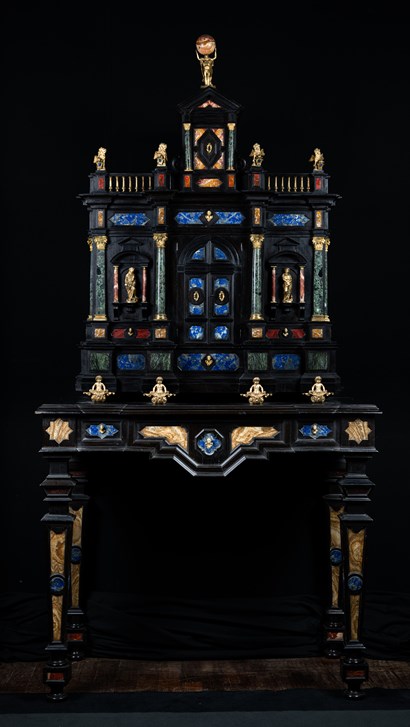
Carlucci Gallery
Roman Cabinat, circa 1780 Ebony veneered, marble and various polychrome stones H 208 x W 105 x D 62 cm Provenance: private collection Cabinet veneered in ebony, marble, and polychrome stones, with an architectural design. The upper section features a tympanum surmounted by Hercules holding the globe in flowering alabaster. A pierced balustrade is crowned with figures of a winged lion bearing a heraldic shield. The façade is articulated with a central door and two lateral doors, each concealing interior disappearing drawers. Materials include jasper, lapis lazuli, breccia, alabaster, and antique green marble.

TEMPLON
Martial Raysse (Nice, 1936) Now, 2017 Acrylic on canvas 209 x 175.5 cm Unique Provenance: the artist’s studio Literature: exhibition catalogue Martial Raysse: œuvres récentes, Musée Paul Valéry, Sète, France; Ed. Loubatières 2023, ill. p. 151 Exhibition: Martial Raysse: œuvres récentes, Musée Paul Valéry, Sète France, 2023

Galerie Alexis Pentcheff
maurice utrillo
Maurice Utrillo (Paris 1883-1955 Dax) Belle Gabrielle, Montmartre, circa 1912-1914 Oil and gesso on cardboard mounted on panel, signed lower right 41 x 55.5 cm Provenance: London, Christie’s sale, 23 June 2004, lot n° 267; European private collection; Galerie Alexis Pentcheff; private collection, France. Literature: Jean Fabris and Cédric Paillier, L’œuvre complet de Maurice Utrillo, Paris, 2009, repr. n° 332, p. 396; Maurice Utrillo, exhibition catalogue, Tokyo, Seiji Togo Memorial Sompo Japan Museum of Art, 2010, n° 1, p. 142 (ill. in colour in the section 'Works reproduced as archives') Exhibitions: Centenary of the Birth of Maurice Utrillo, Musée Jacquemart-André, Paris, May-August 1983, no. 13 (travelling exhibition to Liège, Musée Saint-Georges, and to Lille, Fondation Septentrion in Marcq-en-Barœul, until 15 January 1984); Maurice Utrillo, Tokyo, then Osaka, Kyoto, and Yamaguchi, Japan, 1 November 1985-5 May 1986, n° 17 (ill. cat. in colour); Maurice Utrillo: Solitude Urbaine, Galerie Alexis Pentcheff, Marseille, 22 September-4 November 2017, n° 3 (ill. cat. in colour)

Galerie Boulakia
Joan Miró (Barcelona 1893-1983 Palma) Untitled, 1946 Pen and India ink, coloured pencils, and pencil on paper 30 x 24 cm Signed, dated and inscribed 'Miró. 23-7-1946 à mon cher Joan Gomis, le jour de son anniversaire' (to my dear friend Jean Gomis on the day of his birthday) Provenance: Pierre Matisse Gallery, New York; Joaquim Gomis i Serdañons, Barcelone Literature: Jacques Dupin, Ariane Lelong-Mainaud, Joan Miro : catalogue raisonné, Volume II, 1931-1941, Editions Maeght-Lelong, Paris, 2000, n° 1. 1078, ill. p. 144
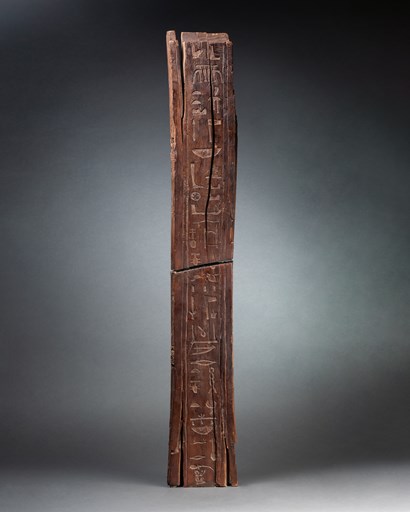
Desmet Fine Arts
Two fragments of a wooden sarcophagus corner post of the Priest Horudja re-united after 50 years Wood Egypt, late Dynastic period, 26th Dynasty, circa 664-525 BC H 92 x W 15 x D 5.5 cm Accompanied by Art Loss Register certificates: S00238635 & S00238636 Provenance: Fragment A: Chakib Slatine, Paris (acquired 1975); private collection, Paris (acquired 1977). Fragment B: Chakib Slatine, Paris (acquired 1975); private collection, Paris (acquired 1977); Ede Gallery, London (of which acquired in 2020)

Giammarco Cappuzzo Fine Art
Giovanni Giacomo Sementi (Bologna 1584-1636 Rome) The Triumph of David, circa 1630 Oil on canvas 137 x 159 cm Provenance: private collection, Italy Literature: M. Francucci, Giovanni Giacomo Sementi, Un dipinto di soggetto insolito, in Arte Cristiana, n° 869, 2012, pp. 143-148; M. Pulini, Rimini per Simone Cantarini, opere da raccolte private, Rimini 2012, pp. 20-21, fig. 20; A. Pellicciari, I'Eredita’ di Guido Reni, in la pittura in Emilia e in Romagna. The Seventeenth Century, edited by Andrea Emiliani, Milano, 1992; G. Puglia, Il Bastaro, fig. 36, pag. 79; M. Francucci, il naturalismo classicizzato nella Roma di Urbano VIII, LibroCo Italy, Florence, 2013; Ariccia, Gian Giacomo Sementi, Quaderni del Barocco, 2021, p. 8 fig. 14
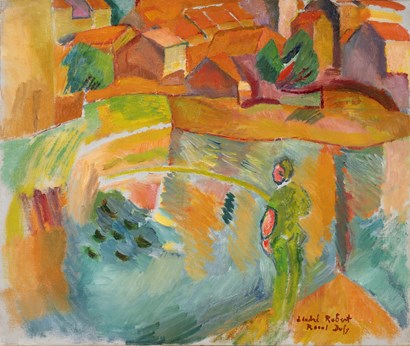
HELENE BAILLY MARCILHAC
raoul dufy
Raoul Dufy (Le Havre 1877-1953 Forcalquier) Le Pêcheur, 1907 Oil on canvas 46 x 55 cm Dedicated and signed lower right, to André Robert, Raoul Dufy Certificate of authenticity issued by Madame Fanny Guillon-Laffaille, dated December 17th, 2003 Provenance: private collection Literature: M. Laffaille, Raoul Dufy, Catalogue Raisonné de l'Oeuvre Peint, vol. I, Geneva, 1972, ill. n° 152, p. 136






